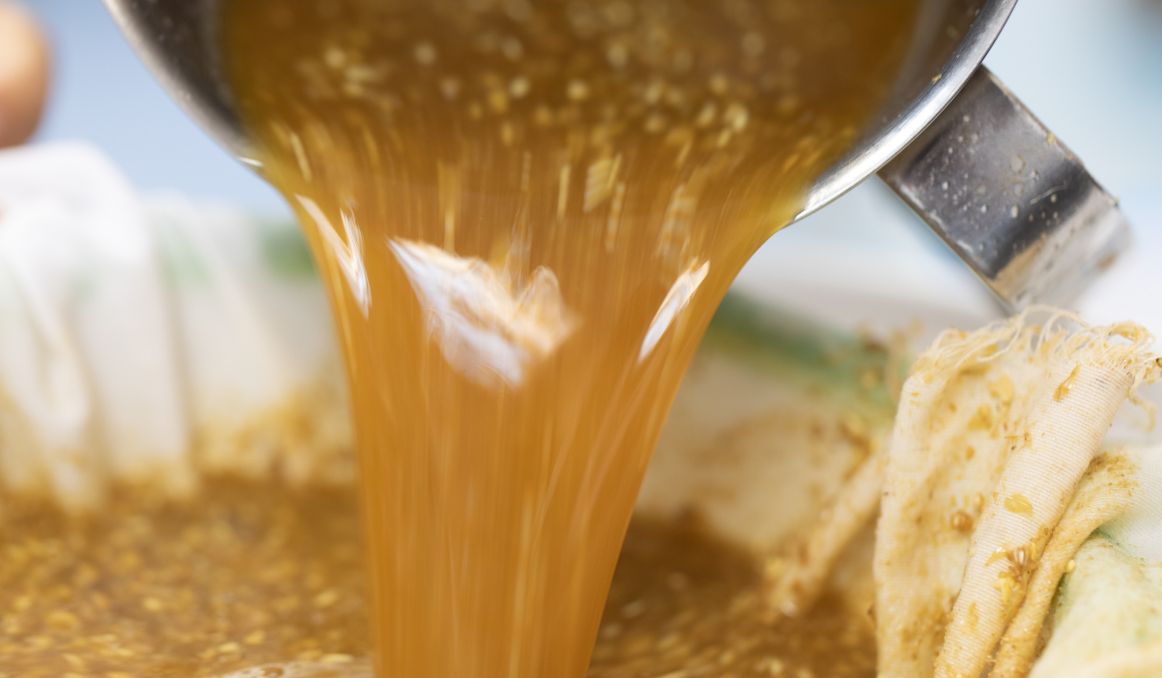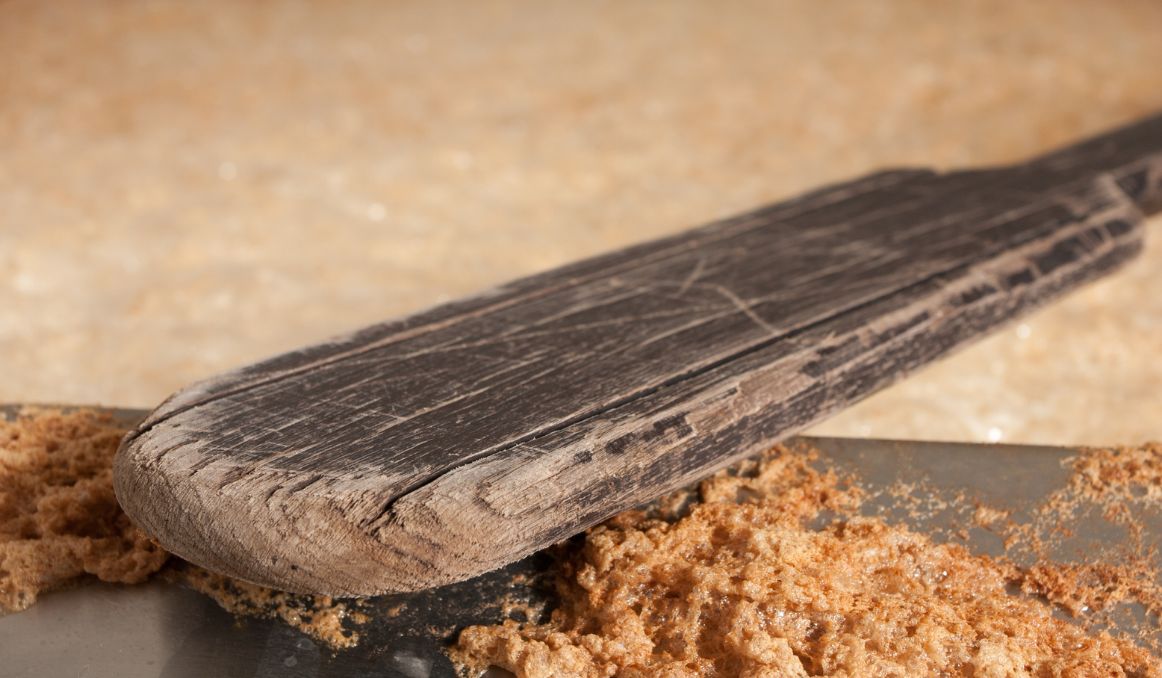What Is Yeast Flocculation? A Detailed Account
For brewers fascinated by the large clumps that form on the surface or the bottom of the beer they brew, there is much to learn. For thousands of years, brewers have watched specific beers form crusts on the top or had to scoop out large white clumps from their batches, never really understanding what exactly those crusts and clumps were.
Today, thanks to advances in science and technology, including microscopes, we are able to tell at least more than we could before. These clumps are known as Flocculation, which many already know. But what is yeast flocculation is a whole other question with a much more involved answer.
What Is Yeast Flocculation?
Yeast flocculation is the aggregation of yeast cells in beer. That answer is the simple one. But why do yeast cells flocculate? And why do they sometimes flocculate on top and sometimes on the bottom? And can brewers control for this variation?

Yeast
First, it is critical to understand what yeast is and what its purpose is.
Yeast is a living organism, one of the first on the planet, in fact, as it is a form of fungi. It is a single celled organism known as a eukaryote. Yeast reproduces asexually through mitosis. Basically one cell divides into two younger and healthier cells. The purpose of this reproduction process it to replace older, unhealthy yeast cells.
Yes, yeasts are fascinating. What does that have to do with flocculation and beer?
Yeast in Beer
Beer would not be beer without yeast. Sure, you need barley, or another grain, malted and cracked to develop and allow access to the sugars in the grain. You need to boil that grain to get all those good sugars in the liquid, now called “wort.” But without yeast at this point in the process, you would just have malted barley water. You would basically be on your way to making a malted milkshake.
When brewer’s pitch yeast into the wort, the wort gets to work eating up all that sugar and converting it to ethanol, or alcohol, and carbon dioxide, which makes your beer foamy. During that process, yeast is also reproducing and getting back to work converting more sugar to alcohol and CO2.
At some point, and depending on various conditions and the type of yeast, that yeast will flocculate. You will notice it gathering together into clumps and forming a crust on the top of the beer or dropping in those clumps to the bottom of the beer.
Flocculation: A Survival Mechanism
It is thought that flocculation occurs as a survival mechanism. The sugar runs low or out, and the yeast have no more work to do. They then form spikes around their outer rim and latch onto each other, fully attaching to form those clumps.
The most amazing thing about this process is that it is entirely reversible. You can skim off the flocculated yeast from the top of the beer or filter it out from the bottom and actually reuse the yeast in another batch later.
What Conditions Create Flocculation?
The first thing to know is that not all yeast flocculates. This survival mechanism is actually specific to brewer’s yeast, whose Latin terms are Saccharomyces cerevisiae and Saccharomyces pastorianus.
Lager Yeast Strains or Ale Yeast Strains
Ale yeast, or S. cerevisiae, is a top flocculating yeast, and lager yeast, or S. pastorianus, is a bottom flocculating yeast. Ale yeast forms what is called a krausen or barm. It is widely recognizable by brewers and bakers alike across the world. Indeed, the barm in some cultures is scraped off the top of beer once it is done fermenting and used to make bread or “barm cakes.” Lager yeast, on the other hand, settles at the bottom of the brewing vessel and is usually filtered out and stored for future use in another batch of lager.
Brewer’s yeast is also typically categorized by how high or low it flocculates, also meaning how quickly or slowly.

High Flocculating Yeast
High flocculating yeast strains flocculate early in the fermentation process, usually 3 to 5 days. This high flocculation means a lot of sugars are left behind in the wort, and you may need to recirculate your yeast by agitating the liquid, or even re-pitch your wort, adding new, more active yeast into the batch to get fermentation to complete.
Medium Flocculating Yeast
These yeasts flocculate more slowly and are thus used more commonly. They typically flocculate anywhere from 6 to 15 days into fermentation and can be nudged along by lowering the temperature of the wort.
Low Flocculation Yeast
The lowest flocculation yeast tends to flocculate much more slowly, well after 15 days of fermentation. These yeast strains are great for wheat beers where the intention is for the beer to be hazy with the yeast, so you will leave that flocculated yeast in the beer.
Other Factors That Affect Yeast Flocculation
As a living organism, yeast is affected by a variety of factors that contribute to its viability, its vitality, and whether and when it flocculates.
It is helpful to know how the conditions of the brewing room as well as the vessel and the liquid can all contribute to the activity of yeast and its flocculation.
Temperature
Temperature is a critical factor. Yeast that is overheated will die off quickly, whereas yeast that is too cold can become paralyzed. Yeast requires a nice 68 to 70 degree F temperature to ferment and flocculate well. So if your yeast flocculates too early, it may be too hot. Lowering the temperature can sometimes get it going again.
Nutrients
Nutrients are also an element to pay attention to. If your yeast runs out of sugar, it may flocculate because it has run out of things to do. For this reason, it is important to be sure your barley or other grain is malted and cracked to your specifications, so you get a consistent fermentation every time.
Oxygen
Oxygen is another part of fermentation and flocculation. Without oxygen, the yeast will ferment the sugar to alcohol and carbon dioxide. With oxygen, the yeast will only convert the sugar to carbon dioxide and water.
Paying attention to the factors involved in yeast fermentation and flocculation can help you control both. Here’s to happy flocculation.
Cheers!
Passionate about the beer and/or wine making process? So are we! If you’re interested in finding out how you can use our technology to control fermentation and monitor your yeast, save work hours and improve the cost-efficiency of your business, drop us a line at [email protected] or check out our product pages:
- Oculyze BB 2.0 (Better Brewing) Yeast Cell Counter App + Hardware
- Oculyze FW (Fermentation Wine) Yeast Cell Counter App + Hardware
Also, you can now get access to a fully functional demo account to test our Web App. Completely free of charge and with no commitment to purchase.
Sources:
- K. J. Verstrepen, G. Derdelinckx, H. Verachtert & F. R. Delvaux, Yeast flocculation: what brewers should know, Applied Microbiology and Biotechnology volume 61, pages 197–205 (2003)
- Malcolm Stratford, Yeast Flocculation: A New Perspective, Advances in Microbial Physiology, Volume 33, 1992, Pages 1-71
- K J Verstrepen, G Derdelinckx, H Verachtert, F R Delvaux, Yeast flocculation: what brewers should know, Appl Microbiol Biotechnol 2003 May; 61(3):197-205
- https://beerandbrewing.com/dictionary/9yHbaDo6RA/
- https://en.wikipedia.org/wiki/Yeast_flocculation
- https://www.enzymeinnovation.com/flocculation-attenuation-explained/


